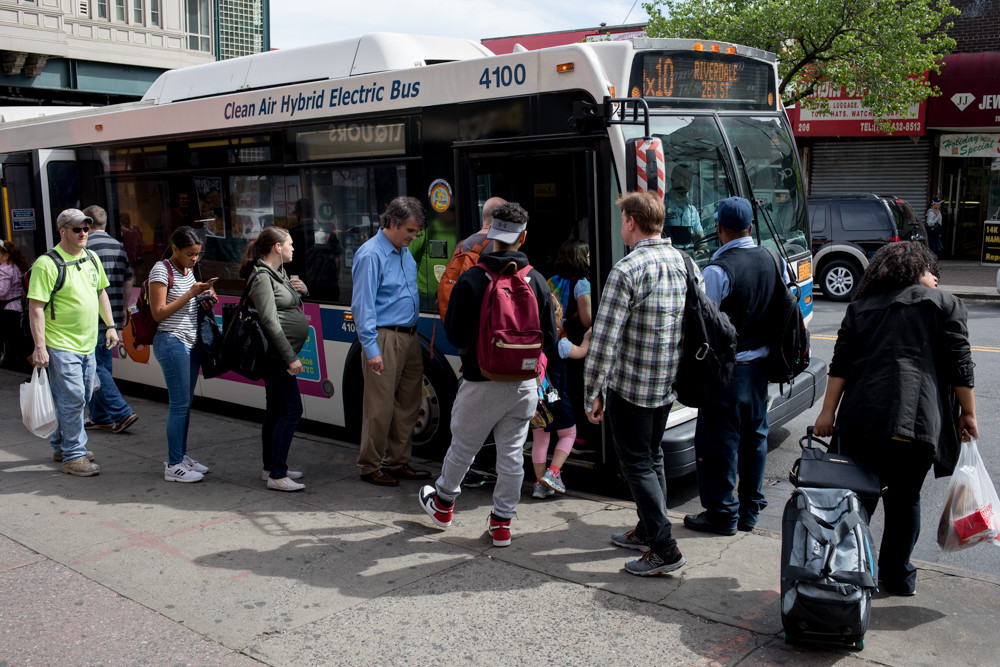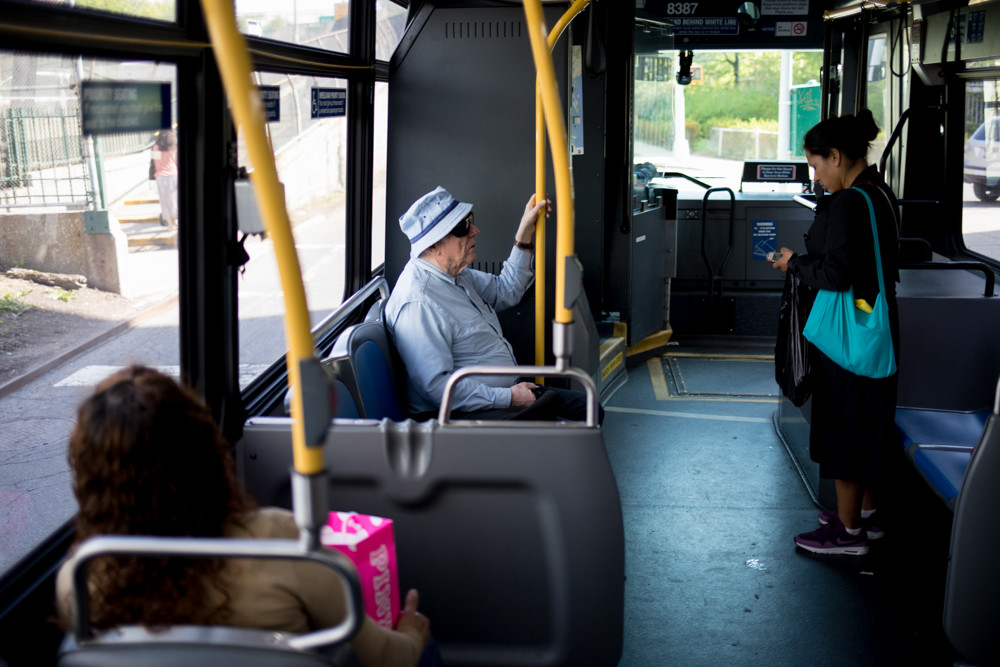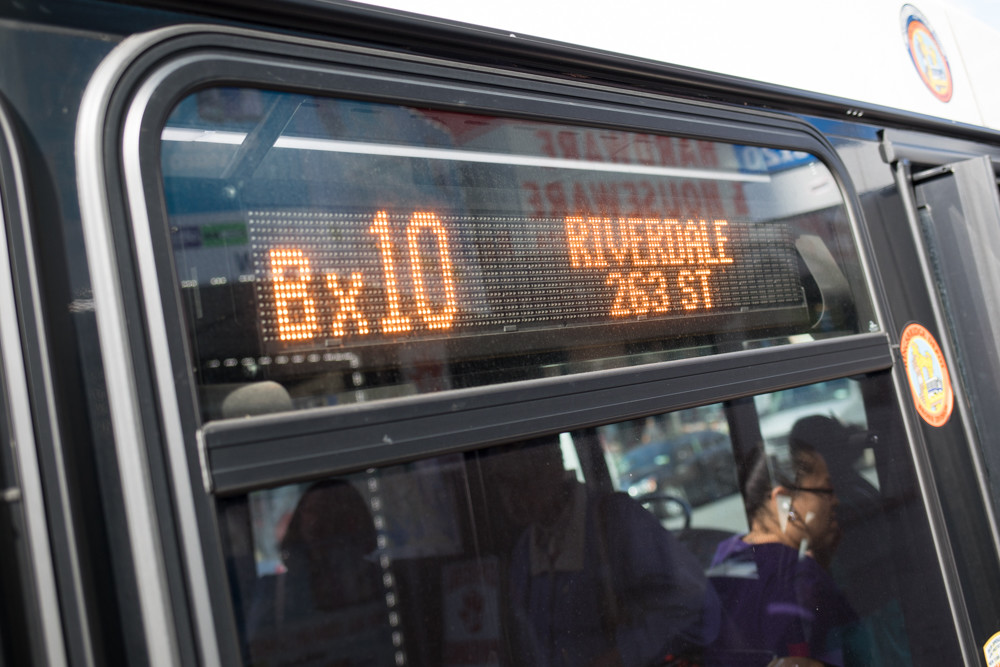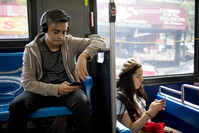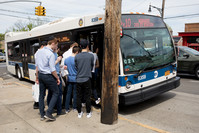Answer found to Bx10 troubles?
Most mornings, Angelina Ventura’s eyes crack open sooner than she’d like.
Rising early to ensure she gets to work on time, Venutra boards the Bx10 bus around 7, commuting from her home near Jerome Avenue, to her job as a registered nurse in North Riverdale’s Skyview-on-the-Hudson.
“There are a lot of delays in the morning,” Ventura said.
But around 5 p.m., when she hops the same bus headed home, “It’s crazy” — not exactly ideal after a long day at work.
Lourdes Matos lives close to the Bronx Zoo, riding the Bx10 when she visits her sister, near Bainbridge Avenue and East 210th Street in Norwood.
“The (Bx10) is good” in general, Matos said in Spanish, while waiting for the bus at West 231st Street and Broadway. “But it’s a little slow.”
Complaints like Ventura’s and Matos’ aren’t isolated. Bx10 riders have long struggled with abhorrent wait times and packed rides, especially during peak hours.
Assemblyman Jeffrey Dinowitz wants to change that. And while he concedes minor improvements have been made to Bx7 service, the larger share of complaints he receives concern the Bx10.
It’s not as though the Metropolitan Transportation Authority isn’t aware of the problem. In fact, the city’s entire bus network will undergo a redesign as part of a comprehensive bus plan recently announced by transit president Andy Byford.
Under the redesign, the MTA will examine the Bx10’s route — along with every other bus line in the city — taking into account customer and community input in an effort to improve service, officials said.
Redesigning routes to reflect changing demographics and travel needs, Byford said, means targeting traffic congestion, expanding off-peak service on some routes, speeding up boarding using all doors, and adding double-decker and electric buses, among other upgrades.
When it comes to his district, Dinowitz has pushed the issue for some time. In addition to any broader-reaching measures, the lawmaker wants to see targeted results that would have an actual impact for riders in places like Riverdale and Kingsbridge.
The Bx10 follows a sprawling, circuitous route, Dinowitz said, covering just about every neighborhood in his district, including North Riverdale, Riverdale, Spuyten Duyvil, Van Cortlandt Village and Norwood.
“It’s a very useful, but also a very long route,” he said.
Complaints regarding service are varied, but chief among them have to do with bus bunching — when multiple buses serving the same line arrive at once — and long wait times. Additionally, Dinowitz said, there simply aren’t enough buses on the road, resulting in throngs of aggravated riders.
“For example, the evening rush, when you go to 231st and Broadway, when a train-load of people get off, there’s an enormous number of people waiting to catch the 10 bus in both directions,” Dinowitz said.
Dinowitz met with the MTA earlier this month to suggest adding shuttles to the Bx10 route, assuaging both bunching and long waits — “wildcatting,” is the term Dinowitz recalled MTA used — where there would be a bus running between West 231st and Broadway, and Riverdale Avenue at the city line.
“My hope is that they can give us both additional service, but also this shorter route during certain times of the day, particularly during the evening rush hours,” Dinowitz said. “In essence, it’s almost like breaking up the bus route into two parts. And I think by doing that, it’ll make things more efficient, and it should improve service for people.”
What makes realizing consistently good bus service even more important, particularly for this part of the Bronx, is lack of subway service compared with other parts of the city.
“We have a lot of people who use the bus to get around,” Dinowitz said. “Not everybody has a car. Not everybody has a choice. The bus service is necessary for a lot of people.”
Poor bus service can present a particular challenge for people who live in the upper reaches of the district.
“There are people who live in the northern part of Riverdale who work way downtown,” Dinowitz said. For some, “the only choice is the No. 10 bus, or the 20 during certain times of the day.”
“All people want is reliable service and service that’s at least reasonably comfortable,” he added, “so that you don’t have to be squeezed like sardines.”
Moreover, in a borough where rush hour may be different than in other parts of the city, offering these shuttles is key to easing commuting’s stresses.
“Rush hour in Riverdale, in the northwest Bronx, starts a little earlier and ends a little later because it’s a little further away” from the city’s midtown hub, said Frederic Klein, community liaison in Dinowitz’s office.
“So if you work on Wall Street,” for example, “it’s going to take you longer to get to work” than if you lived, say, in downtown Manhattan, “so you have to leave from Riverdale earlier than the typical rush hour.”
As for a timeline when these new shuttle routes could take effect, Dinowitz said he’s “very hopeful” they’ll happen “in a reasonable time.”
“We’ll see. I think it’s worth trying,” he said. “The same isn’t working, so let’s try something different.”
In the meantime, Ventura and other Bx10 riders will have to ride out the delays.
“I don’t like it, but I need to take (the bus) because I don’t have a car,” Ventura said. “And, we don’t have trains around here.”

